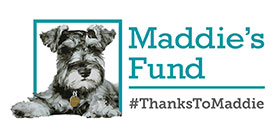Leash reactive dogs may lunge, pull, whine, bark or growl at other dogs, people, cars, bikes, etc. while on leash. Some of these dogs may even snap or bite if they get close enough. Reactivity often stems from fear; the dog reacts to create space from the scary person, dog, bike, etc. It may also be rooted in frustration caused by a dog being on leash, which is why you will start reactivity training by first teaching loose leash walking without distractions! Walking reactive dogs can be difficult and frustrating for owners, but don’t give up! There is work to be done!
Follow the below guidelines to assist in safely walking your new dog and have a happy and long-lasting relationship.
- It is helpful to identify the distance away from the trigger where the dog will begin to react. Keep the dog under the reaction threshold by avoiding the trigger (other dogs, people or object) until the dog has mastered skills needed to not react to the trigger. The goal is to get the dog to stop practicing the reactive behavior by creating distance; crossing the street, changing direction or hiding behind a parked car are possible strategies. Walking on quiet streets during low traffic times makes this easier to achieve.
- Always fill pockets or treat bags with small, high value treats (cheese, hot dogs, chicken, etc.) before every walk for getting the dog’s attention away from the trigger.
- Remember, if the dog is allowed to practice the reactive behavior, reactivity will become more frequent and intense. The strategy is to keep the dog under threshold, so the dog has no reason to feel unsafe or over aroused.
- The right equipment is very important for safety and success. Make sure the leash is in good condition and is no longer than 5-6 feet. Front clip harnesses can work well for some dogs such as the Easy Walk Harness or the Freedom Harness. Head halters such as the Halti or the Gentle Leader are also appropriate as they give good control in a non- punitive manner. Be sure to properly acclimate a dog to a head halter before use. See the Special Equipment page for more information.
- Take the free online “The Leash Reactive Dog” course at Instinct Dog Training Online School.
- Until you get to know your dog’s off-leash behavior, do not attempt to go to off-leash dog areas. If you have a safe fenced-in yard, you can try to plan play time with one of your friend’s dog- friendly dogs and do a slow introduction. Consider using a muzzle for the initial introduction
- Sign up for a training class with a professional trainer who can handle reactive dogs. Make sure you let the trainer know about your dog’s reactivity.
If you are not successful curbing your dog’s reactive behavior, please contact a local certified dog trainer or behavior consultant. You can find a list of recommended behavior professionals on the Oakland Animal Services’ Resources Classes and Trainers page.
